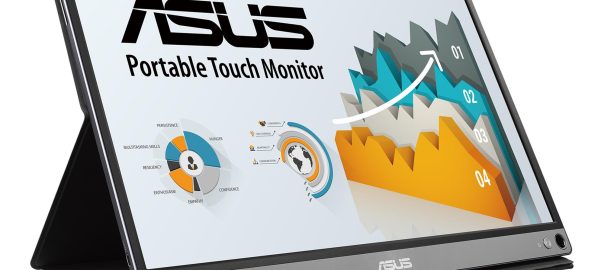
How Touch Screen Technology Works
Touch screen enables users to directly interact with electronic devices. They allow quicker and more accurate selections than standard computer systems that require a keyboard and mouse.
Touchscreens work with an insulating glass surface that’s coated with an electrically conducting material. When the finger touches this layer, it shifts the distribution of an electrostatic field, which sensors detect.
Dispersive signal technology
Dispersive signal technology is a new touchscreen technology that sets high-performance touch standards for large displays. This patented technology is unaffected by static objects or other touch locations and requires no special hardware. It uses a pure chemically-strengthened glass substrate and provides exceptional optics. It also has superior durability, excellent light transmission and can be sealed to protect the LCD from contaminants.
This technology works by using a matrix of sensors to determine the location of a touch on a display. The sensors emit a pattern of light across the surface and detect interruptions of that pattern. Each interruption produces a unique combination of signals. These signals are digitized and then compared to a list containing all positions on the screen to determine the touch position. This method is fast and accurate, but it may suffer from interference from extraneous noise.
Another method of determining the touch position is to use vibration waves. The vibration or bending waves triggered by the touch travel radially and generate different voltage curves in detectors at four corners of the display. A mathematical algorithm can calculate the touch position from these curves. This method also allows for stylus differentiation from finger touches. However, it requires a larger excitation pulse amplitude and increased hardware complexity. As a result, it is not suitable for low-cost devices.
Infrared technology
Infrared (IR) touchscreens detect touch points using an array of photo-detector pairs and light-emitting diodes. These create an invisible grid across the screen. When a finger touches the screen, the beam is interrupted and the photo-detector pairs respond by sending an electric signal to the system. The system then interprets the touch as a command and transmits it to the appropriate application.
Acoustic pulse technology uses sound waves to detect a touch on the screen. Ultrasonic noises too high-pitched for the human ear hum on the surface of the screen. When you touch the screen, the sound waves are disrupted and the microchip controller Touch screen measures the disturbance to determine the exact location of the touch point. The system then interprets the command based on the controls displayed on the screen.
Unlike PCAP, which requires electrode film, IR touchscreens can be used with any object, including gloves. They also retain image clarity and are resistant to dust, water, and scratches. In addition, they Touch screen have a short response time and can support up to 40 touch points simultaneously.
The technology behind these screens is similar to the keyboard on a laptop. Every key has two layers of electrically conducting plastic separated by a plastic membrane with holes in it. When you push a key, the top layer contacts the bottom layer through the hole, completing an electric circuit. The computer then knows what key you have pressed based on the type of current it senses.
Electrostatic capacitance technology
Electrostatic capacitance technology is used in many different touch screen applications. Typically, the glass panel of the device is coated with a layer that contains a static charge. When a finger touches the sensor, the static charge shifts from the finger to the device. This change in the electric field enables the sensor to detect the position of the finger on the screen. This type of sensor can be used for a variety of applications, including identifying users, determining the orientation of the finger, and differentiating between fingers and palms.
Another popular form of touch screen is a matrix-based display that uses photodetectors to recognize touch commands. The sensor is configured into a grid of columns and rows. When a finger touches the sensor, it reduces the capacitance at the specific row or column intersection. This warping of the capacitance allows the sensor to identify the finger’s location and determine the command.
While resistive touchscreens have the advantage of being able to sense pressure, they cannot be used with gloves or water and are limited in their ability to detect multi-touch gestures. They also have a lower resolution and slower response time than capacitative touchscreens. Resistive touchscreens are currently being replaced with more advanced materials, such as copper microwires, silver metal mesh, and graphene. These new materials can be used to create a more durable, rugged, and flexible touch screen.
Acoustic pulse technology
Touchscreens are a popular input device for PCs. They allow users to interact with applications, and can be used in a variety of ways including single-tap, double-tap, pinch, swipe, and drag. However, the design of a touchscreen should reflect technical capabilities, ergonomics, and human physiology. In addition, touchscreens need to be resistant to moisture, dust, and finger oils. In order to address these problems, a number of technologies have been developed to improve the SNR of touchscreens.
Among these, PSD and FTIR are the most commonly used. Both work with invisible infrared (IR). The traditional IR-based touchscreen places transmitters and receivers on opposite sides of the screen without any additional layers. The touchscreen detects touches by analyzing the pattern of lights escaping toward each plane and finding the ones that are blocked by touches. This allows the touchscreen to create x- and y-axis coordinates of each touch point.
Another method to improve the SNR of touchscreens is the multiple-frequency driving scheme. This technique uses different frequencies for stylus and no-touch signals to distinguish between them. This can increase the SNR of touchscreens by reducing dynamic range and power consumption. However, it requires a high-complexity FFT processor.
